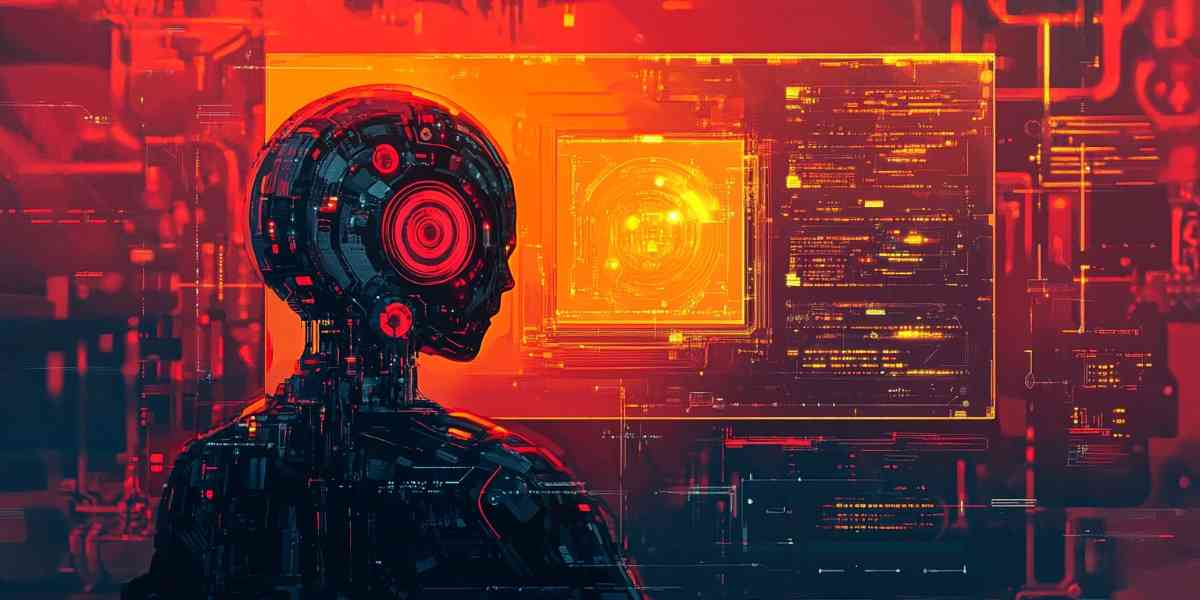How an AI is Made

Artificial intelligence (AI) has become one of the defining technological advancements of the 21st century. From language models like ChatGPT to image recognition, autonomous vehicles, and predictive analytics, AI is reshaping industries and transforming human interaction with technology. But the process of creating AI is complex and involves multiple stages of development, each requiring specialized knowledge and resources.
The journey of AI creation starts with theoretical foundations and mathematical models, followed by data collection and preparation, model design, and algorithm training. Once an AI model is trained, it must be evaluated, tested, and optimized before it is ready for deployment. Even after deployment, AI systems require ongoing monitoring and updates to maintain performance and avoid issues like data drift and bias.
⸻
Theoretical foundations of AI
Early AI concepts and definitions
The idea of artificial intelligence emerged long before the modern computer era. Ancient myths and mechanical automata reflected a human fascination with creating artificial life. However, AI as a scientific discipline began to take shape in the 20th century.
Alan Turing’s 1950 paper, Computing Machinery and Intelligence, is widely regarded as the foundation of AI theory (Turing). Turing proposed the idea that a machine could simulate human intelligence if it could engage in a conversation indistinguishable from that of a human — a test now known as the Turing Test.
The field of AI formally emerged at the 1956 Dartmouth Conference, where John McCarthy, Marvin Minsky, Nathaniel Rochester, and Claude Shannon coined the term “artificial intelligence” and established it as a distinct research field (The History of Artificial Intelligence, McCorduck). Early AI research focused on symbolic reasoning — rule-based systems that attempted to simulate logical thinking.
Symbolic AI vs. Connectionist AI
AI development initially followed two major approaches:
1. Symbolic AI – Also known as Good Old-Fashioned Artificial Intelligence (GOFAI), this approach involved representing knowledge using symbols and logical rules. Expert systems were built on this model in the 1970s and 1980s (Artificial Intelligence: A Modern Approach, Russell and Norvig).
2. Connectionist AI – Inspired by the structure of the human brain, this approach involves artificial neural networks. Instead of rules, these networks learn patterns and relationships from data. Connectionist AI laid the foundation for modern deep learning models.
Symbolic AI struggled with complexity and ambiguity, leading to the rise of connectionist AI in the 1990s and 2000s as computing power and data availability increased.
The rise of neural networks
Artificial neural networks (ANNs) are mathematical models inspired by the structure of biological neurons. A neural network consists of:
- Input layer – Where raw data enters the model.
- Hidden layers – Where the data is processed through weighted connections and activation functions.
- Output layer – Where the model generates predictions or decisions.
Training a neural network involves adjusting the connection weights through a process called backpropagation — calculating the error of the model’s prediction and adjusting the weights to minimize this error (Learning Representations by Back-Propagating Errors, Rumelhart et al.).
Deep learning, a subset of neural networks with multiple hidden layers, has enabled the development of powerful AI models capable of handling complex tasks like natural language processing and image recognition (Deep Learning, Goodfellow et al.).
⸻
Data: The foundation of AI
Data collection
AI models require massive datasets to train effectively. The quality, diversity, and size of the dataset directly impact model performance. Data sources include:
- Structured data – Databases, spreadsheets, and financial records.
- Unstructured data – Text, audio, images, and video.
- Synthetic data – Artificially generated data used to supplement training sets.
Language models like GPT-4 were trained on hundreds of billions of tokens from books, articles, and websites (Language Models are Few-Shot Learners, Brown et al.). Image recognition models like ImageNet rely on millions of labeled images for training (ImageNet Classification with Deep Convolutional Neural Networks, Krizhevsky et al.).
Data cleaning and preprocessing
Raw data is rarely suitable for immediate use. Data must be cleaned and processed to ensure consistency and accuracy. This includes:
- Removing duplicates and irrelevant data
- Correcting errors and inconsistencies
- Standardizing data formats
- Removing outliers and noise
For language models, preprocessing includes tokenization (breaking text into smaller units), lemmatization (reducing words to their root forms), and vectorization (converting text into numerical data) (Natural Language Processing with Python, Bird et al.).
Data labeling
Supervised learning requires labeled data — data that includes both input and output values. Image recognition AI, for example, needs labeled images (“dog,” “cat”) to learn patterns.
Data labeling can be performed manually or through automated methods. Human-labeled data is more accurate but time-consuming and expensive (Semi-Supervised Learning, Zhu).
Data augmentation
Data augmentation increases the size and diversity of a dataset without collecting new data. For example:
- Flipping, rotating, and cropping images to generate variations.
- Replacing words or adding noise to text datasets.
Augmentation helps models generalize better to new data (Understanding Machine Learning, Shalev-Shwartz and Ben-David).
⸻
Model design and architecture
Choosing the model type
AI models are designed based on the task and type of data:
- Supervised learning – The model is trained on labeled data to predict outcomes (e.g., spam detection).
- Unsupervised learning – The model identifies patterns in unlabeled data (e.g., customer segmentation).
- Reinforcement learning – The model learns through trial and error, receiving rewards or penalties (e.g., game-playing AIs).
Neural network architectures
- Convolutional Neural Networks (CNNs) – Designed for image and video processing (ImageNet Classification with Deep Convolutional Neural Networks, Krizhevsky et al.).
- Recurrent Neural Networks (RNNs) – Effective for sequential data like language and time series (Long Short-Term Memory, Hochreiter and Schmidhuber).
- Transformer Models – The foundation of modern language models (Attention Is All You Need, Vaswani et al.).
Transfer learning
Transfer learning involves training a model on a large dataset and fine-tuning it for a specific task. GPT and BERT models are based on transfer learning (BERT: Pre-training of Deep Bidirectional Transformers for Language Understanding, Devlin et al.).
⸻
Training the AI
Forward and backpropagation
Training a neural network involves two key processes:
1. Forward propagation – The input is processed through the network to generate predictions.
2. Backpropagation – The loss (error) is calculated and propagated backward to adjust the weights.
Loss function and optimization
Loss functions measure the difference between the model’s prediction and the actual result:
- Mean Squared Error (MSE) – For regression tasks.
- Cross-entropy loss – For classification tasks.
Optimization algorithms like Adam and stochastic gradient descent (SGD) are used to adjust the network weights (Adam: A Method for Stochastic Optimization, Kingma and Ba).
⸻
Evaluation and testing
Once training is complete, the model is tested using unseen data. Metrics include:
- Accuracy – Percentage of correct predictions.
- Precision – True positives divided by predicted positives.
- Recall – True positives divided by actual positives.
- F1 score – Harmonic mean of precision and recall.
⸻
Deployment and maintenance
Model compression
Large models are compressed using:
- Pruning – Removing low-impact connections.
- Quantization – Reducing numerical precision.
- Knowledge distillation – Training a smaller model using the outputs of a larger model (Distilling the Knowledge in a Neural Network, Hinton et al.).
⸻
Ethical and regulatory challenges
AI development raises significant ethical concerns:
- Bias – Biased training data leads to biased models.
- Privacy – Large language models can memorize sensitive data.
- Accountability – Determining responsibility for AI decisions.
Regulatory frameworks are emerging to address these issues (The Ethics of Artificial Intelligence, Bostrom and Yudkowsky).
⸻
How to build a simple AI yourself
Building a small AI model at home can be surprisingly straightforward if you focus on the core concepts rather than the technical details. Imagine you’re teaching a child how to recognize different types of fruit — this simple analogy mirrors the process of training a basic AI.
Step 1: Define the goal
First, decide what you want your AI to do. Suppose you want to create a system that can predict a person’s mood based on the weather. The goal is clear: given weather data (temperature, rain, sunshine), the AI should predict if someone is likely to feel happy or sad.
Step 2: Gather data
Just like teaching a child, your AI needs examples to learn from. Imagine writing down a list of observations:
- Sunny, warm → Happy
- Rainy, cold → Sad
- Cloudy, cool → Neutral
The more examples you provide, the better the AI will learn.
Step 3: Identify patterns
In simple terms, your AI is like a student learning which weather patterns lead to certain moods. It will look for clues — for example, warmth and sunshine might have a stronger connection to happiness. This is similar to how you might notice that people smile more often on sunny days.
Step 4: Build a simple ‘brain’
Instead of manually explaining these patterns, your AI can learn them itself using a basic neural network. Imagine a network of connected switches. Each switch adjusts itself slightly based on the data it sees — turning ‘on’ or ‘off’ more easily depending on the patterns it identifies.
At first, these switches are random. But with each example (sunny = happy, rainy = sad), the network adjusts the switches to improve its predictions. This process is called training.
Step 5: Correct mistakes
Your AI won’t get everything right at first — just like a child learning math. Each time the AI predicts incorrectly (e.g., “cloudy” = “happy” when the correct answer is “neutral”), it adjusts its switches to improve. Over time, these small corrections add up, making the AI more accurate.
Step 6: Test your AI
Once your AI has seen enough examples, you can ask it to predict new outcomes. For instance:
- Sunny, cool → The AI might predict “happy.”
- Rainy, mild → The AI might predict “neutral.”
If the AI gets things wrong, you can feed it more data or adjust the learning process.
Step 7: Improve and expand
If your AI performs well, you can expand it by adding more data (e.g., wind speed, time of year) or refining its ‘brain’ to recognize more complex patterns.
Imagine it like baking a cake
Think of AI training like baking a cake:
1. Ingredients = Your data.
2. Recipe = The AI model’s structure.
3. Mixing and Baking = The training process.
4. Tasting = Testing the AI on new data.
5. Adjusting the Recipe = Improving the AI if it performs poorly.
Even with simple tools, you can create something surprisingly effective — much like baking a great cake without being a professional chef.
This simplified process gives you a sense of how AI models are trained and improved, showing that anyone with curiosity and patience can experiment with basic AI.
Conclusion
Creating AI is a complex process involving theory, data, computation, and continuous monitoring. As AI models grow in capability, the challenge of ensuring fairness, privacy, and accountability will define the future of AI development.













